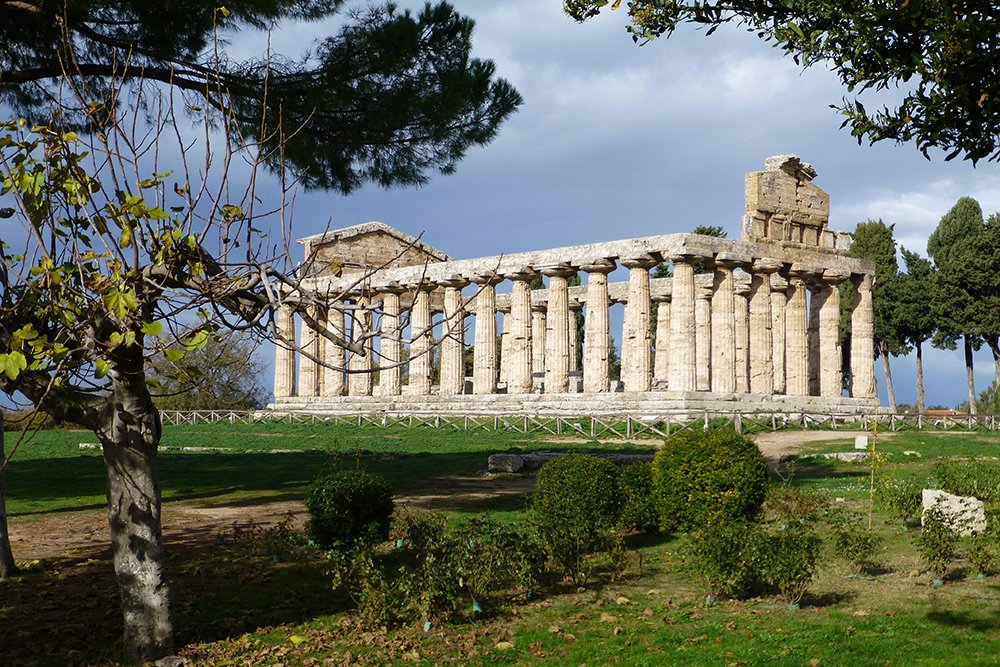
Italy has been significantly influenced by various civilizations throughout history. Among these, the ancient Greeks played a pivotal role in shaping Italian culture.
Greek art, with its emphasis on aesthetics, symmetry, and realism, had a profound impact on Italian art. Italian artists and artisans embraced Greek artistic principles, leading to the creation of remarkable works that continue to captivate the world.
Greek sculpture, characterized by its lifelike representations of the human form and attention to detail, inspired Italian sculptors through the ages. The influence is evident in masterpieces like Michelangelo's "David" and Donatello's "David," both of which showcase the Greek ideal of physical beauty.
Greek pottery, known for its intricate designs and storytelling, influenced Italian ceramic traditions. Regions like Apulia developed their unique styles, blending Greek motifs with local influences.
The use of mosaics in art and architecture, a technique pioneered by the Greeks, found its way into Italy. Roman mosaics, such as those at Pompeii and Herculaneum, borrowed heavily from Greek designs, preserving and furthering this art form.
Greek philosophy, characterized by profound thinking and the pursuit of wisdom, laid the intellectual foundation for Italian culture. The works of Greek philosophers continue to inspire Italian thought and scholarship.
The philosophical teachings of Aristotle and Plato profoundly impacted Italian thinkers, including scholars during the Italian Renaissance. The revival of their works led to advancements in various fields, including science, ethics, and political theory.
Humanism, a cultural movement during the Renaissance, drew heavily from Greek humanist traditions. Humanist scholars like Petrarch and Pico della Mirandola explored the human condition and the potential for human achievement, inspired by Greek ideals of individualism and human excellence.
Greek architectural principles have left an enduring legacy on Italian architecture. The fusion of Greek and Roman architectural elements in Italy has produced iconic landmarks that continue to draw admiration.
Greek-style columns, such as Doric, Ionic, and Corinthian, became integral to Italian architecture. The Temple of Concordia in Agrigento, Sicily, stands as a testament to Greek architectural influence in Italy.
The concept of amphitheaters, as seen in Greece's Theater of Epidaurus, found its way to Italy, with the construction of theaters and amphitheaters throughout the Roman Empire. The Colosseum in Rome is a prime example of this architectural adaptation.
Greek city planning principles, including the layout of streets and public spaces, influenced the design of Roman cities. Italian cities like Naples and Syracuse, with their grid-based street layouts, reflect these Greek planning principles.
Greek traditions, deeply rooted in mythology, religion, and rituals, have been integrated into Italian culture, enriching its tapestry of customs and celebrations.
Greek mythology, with its pantheon of gods and epic tales, has influenced Italian literature and art. Mythological themes and characters are prevalent in Italian paintings, sculptures, and literary works.
The Greek Orthodox Church and its traditions have left their mark in Italy, especially in the southern regions. The presence of Greek Orthodox communities in places like Calabria and Apulia showcases the enduring religious connection.
Italian festivals, such as Carnival in Venice, incorporate elements of Greek theater and masked traditions. These celebrations blend ancient Greek and Italian cultural elements to create unique and vibrant events.
The Italian Renaissance, a period of cultural rebirth from the 14th to the 17th centuries, saw a revival of interest in Greek culture and ideals. This period profoundly influenced art, philosophy, and intellectual pursuits.
Greek manuscripts rediscovered during the Renaissance led to the study of Greek classics and the revival of Greek literature. These manuscripts inspired Italian scholars and contributed to a more profound understanding of Greek culture.
The Neoclassical movement in art, which emerged during the 18th century, drew inspiration from Greek and Roman antiquity. Italian artists like Antonio Canova created sculptures that embodied the grace and idealism of ancient Greece.
During the Neoclassical era, Italian architects embraced Greek architectural elements once more. The result was a resurgence of Greek-inspired buildings, including government structures, museums, and private residences.
The Greek influence on Italian culture is a testament to the enduring impact of ancient civilizations on contemporary societies. Italy's art, philosophy, architecture, and traditions bear the indelible mark of Greek civilization. From the masterpieces of Renaissance art to the philosophical inquiries of Italian thinkers, the contributions of Greece continue to shape and enrich Italian culture. The intertwining of these two great civilizations has created a cultural heritage that is both timeless and inspiring, demonstrating the power of cross-cultural exchange in shaping the world we know today.

More Details